I love everything about food – the components, the assembly and the presentation. I enjoy experimenting with colour palettes and taste palates, textures and light. I love to highlight the net skins of cantaloupes and the bum cheeks of peaches, almost as much as I enjoy sushi and (cooking with) wine. I love highlighting the beauty of a dish but that’s not always real – the pretty food you see on this blog represents a tiny portion of my food reality – please don’t take it as the entire gospel. Many a time, I bite into a juicy peach and barely have time to notice the soft downy skin, or the patches of colour. Sometimes I ignore the pleasure of eye candy and focus on the ‘taste’, enjoying the combination of flavour makers that results in a gorgeous plate.
One thing I’ve always wondered about Nigerian food is ‘Does it sit pretty’? My memories of food at home don’t involve elaborate/delicately styled food. Yes, plates are garnished – slices of tomatoes, onions and parsley greenery are common, as are molds of rice and sauce nested in bowls. Fancy serveware – crockery and cutlery though are not part of the deal: so a small roadside cafe won’t focus on getting paisley embossed saucers as perhaps they might do in Paris, but that’s just the way it is.
Now since I discovered food photography, my approach to food has changed somewhat. I love the way the colours of food and the utensils on which they are served interact, like a salad full of yellow tones looks superb on a black plate but I also love eating some things with my hands, sans cutlery with banana leaves as the canvas. In a small way, I’ve struggled with making Naija food look good as I know it, serving it so it appeals to senses and sensibilities outside the norm. OK, with rice its not so bad, as with meat but how do you make Ukwaka look good? I must also admit a preoccupation with making Nigerian food accessible to the world. Not so much to make people cook it but to create an awareness of what it is all about- the ingredients, the cooking styles, the composition of our meals. For me, the simplest way to do this is to find and draw parallels, highlighting similarities between western/oriental dishes so people can relate to them. I am constantly on the look out for reviews were descriptions of African spices are linked to common known flavours like cinnamon, cardamom, black pepper and more.
I’ve decided that I’ll share my recipes and celebrate them for what they are – sometimes plain, often simple (in a complicated sort of way) and commonly served without fancy and perhaps eaten with only a spoon or fork to dissects its goodness. Something we can all understand.
Today I share a recipe for Ukwaka, a savoury steamed plantain pudding, thickened with polenta and a short cast of other ingredients, typically wrapped up and cooked in waterproof banana leaves … and that’s as fancy as the gear gets.
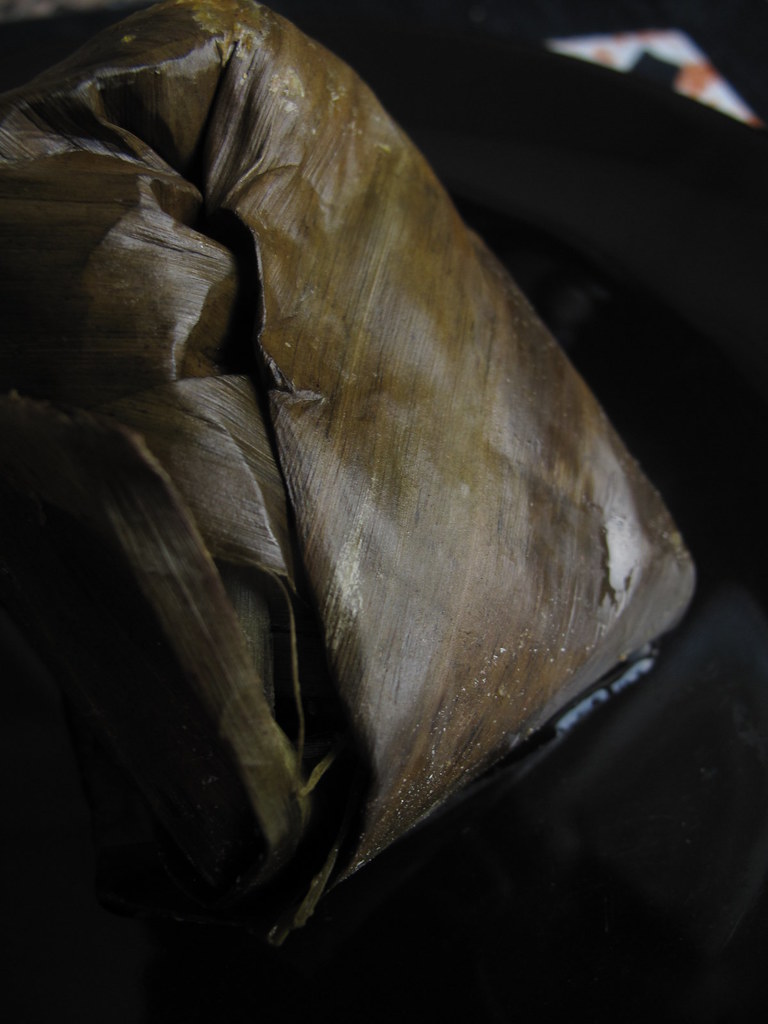
Ukwaka can be breakfast food, served with hot, milky corn pap or oats. It could be a snack. Or lunch. Or dinner. Best of all, it is the perfect remedy for overripe plantains, as banana bread is for brown-speckled, soft bananas. Essentially, you take extremely sweet plantains, blend them with water, onions and chili peppers, season with some salt and dried crayfish if you wish and then bring them together with a sprinkling of polenta and some vegetable or palm oil. Once the batter is ready, you ladle it into ramekins or gently fold banana leaves into a cone sealing off base and top and then ‘water bath’ them (like you do for creme caramel/brulee) for half an hour or more, till the puddings are firm.
One critical success factor of this is the balance between sweet, hot and salty. The peppers need to be prominent but not too much to cut through the (otherwise sickening) sweetness of the plantains and that needs to be balanced with a healthy pinch of salt. Now, most Nigerians can’t handle a whole lot of sweet in their savoury, not as well as Indonesians can and you’ll find particular dishes which are almost always cooked with some chili pepper. Like fish. Majority of Nigerians say you need the heat from the peppers to cut through the monotony of the fish flesh and very few would eat fish without it.
The right amount of polenta adds body to the soft batter, a crucial ingredient. This is where I am glad that my documenting of recipe ingredients serves me well for future trials, for in the past I’ve made Ukwaka that was too firm, and Ukwaka that was too soft because I never got the ‘ratios’ right. My upbringing of ‘loose estimation’ in cooking has helped me experiment, and vary the way I cook a particular dish but it has hindered me in that there is a propensity to failure with the lack of repeatability. When you write a recipe down, you immortalise it and can consistently repeat it, barring minor variations. When you don’t have that template and a poor memory, things get tough.
Another reason I’m glad for food blogging….whereby I am encouraged to write down my recipes, cataloguing ingredients and processes and learning in the process too. I am glad to say all turned out well. And I now have the ratios right: were I to make this tomorrow, I would have firm boundaries to constrain me.
Ukwaka
Ingredients
3 overripe plantains, peeled and cut into 2 inch pieces 1 small (red) onion 1 – 2 fresh chili peppers, to taste 2 tablespoons (vegetable/palm) oil 1 and 1/2 cups water, room temperature 1/2 cup polenta Salt, to taste 1 tablespoon dried, ground crayfish (optional) To cook: ramekins or fresh banana leavesHow to
In a blender or food processor, combine plantains, onion, peppers, oil and water till smooth.
Pour plantain batter into a bowl and add polenta (and crayfish, if using), stir till well combined and then salt to taste.
Now, decide on what to do. You have two options
Option 1. Using ramekins
Spoon the mix into lightly oiled ramekins – this is the easiest option. You’ll need 6 – 8 ramekins, only 3/4 full. Place ramekins in a large pan – fill the base and if any are left over then create another layer with the rest, in pyramid fashion – more ramekins at the base and less on top. Pour water just shy of the height of the first layer, being careful not to let the water into the ramekins. Cook on the stovetop on medium heat for half an hour or more, till the puddings are firm.
Option 2. Using banana leaves, the traditional way
This is trickier option, especially if you aren’t used to using them. I am so I didn’t have a lot of concern till I unfurled the batch of frozen leaves I had and tried to assemble them into useable containers. The strips of leaves I had were halves from rather large leaves, where as I am used to using much smaller leaves. In the end, I managed to fashion a cone from a couple of pieces of leaves for each portion. The base of the cone was folded up to prevent the mix from seeping out and once I had ladled a spoonful of the mix in, I pretended the top part was part of my aeroplane folding kit and sent the two edges in to an imaginary centre and the peak was folded down, so it almost touched the tip of the base of the cone.
Sorry if it sounds complicated – promise you a video soon.
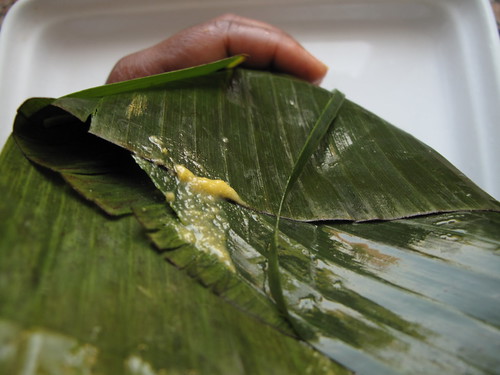 When your batter is all used up, line the base of a large pan with some banana leaves and stack the banana wraps, first covering the base and then putting the rest on top. Pour in a couple of cups of water – not to cover the wraps but up to a third of the way up. You could always start out with a little and add more water as necessary. They should be ready after half an hour of cooking on the stovetop.
When your batter is all used up, line the base of a large pan with some banana leaves and stack the banana wraps, first covering the base and then putting the rest on top. Pour in a couple of cups of water – not to cover the wraps but up to a third of the way up. You could always start out with a little and add more water as necessary. They should be ready after half an hour of cooking on the stovetop.
When they’re ready, allow to cool for a few minutes and then serve as you will.
I had mine plain, and then with some left over pan-fried tilapia. I love it – the spice from the peppers balanced the sweetness, and had such depth of flavour for the such simple ingredients. I loved the texture – it was soft with a smooth ‘crumble’ look, which wasn’t at all dry – testimony to the perfect proportion of polenta. I love it as did my sis – she got the one in the ramekin. She felt it was a tad too hot for her but agreed that it needed it.
Just a tiny bit of home on a cold summer’s day in the Netherlands, served on banana leaves. Warmth.

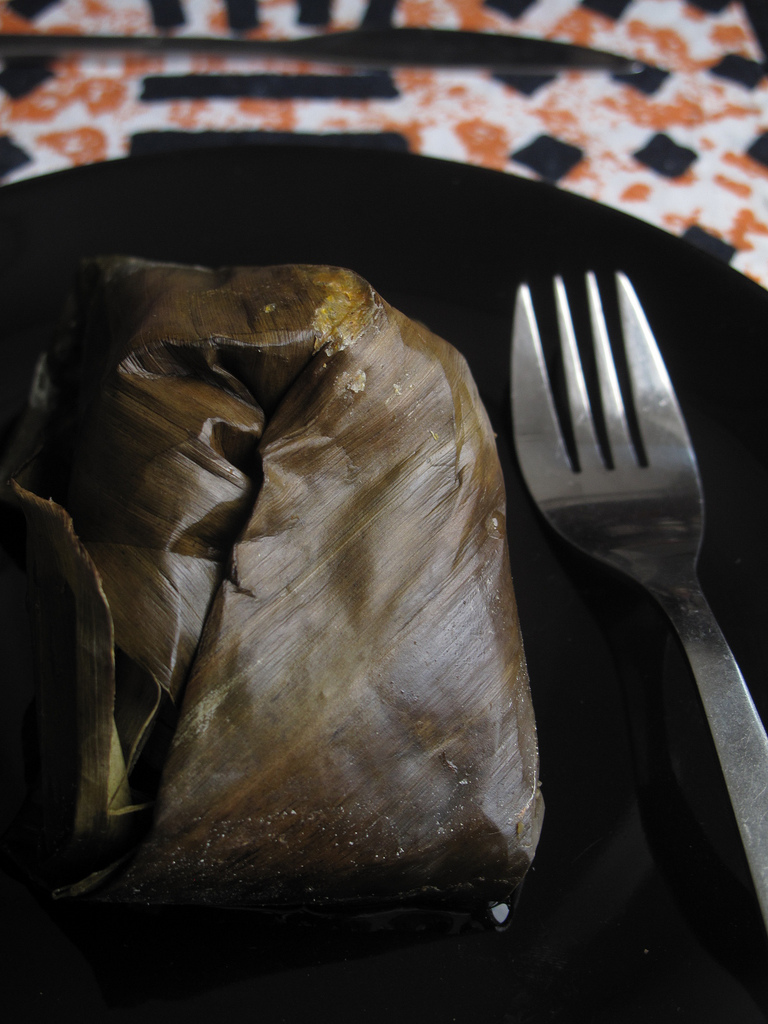



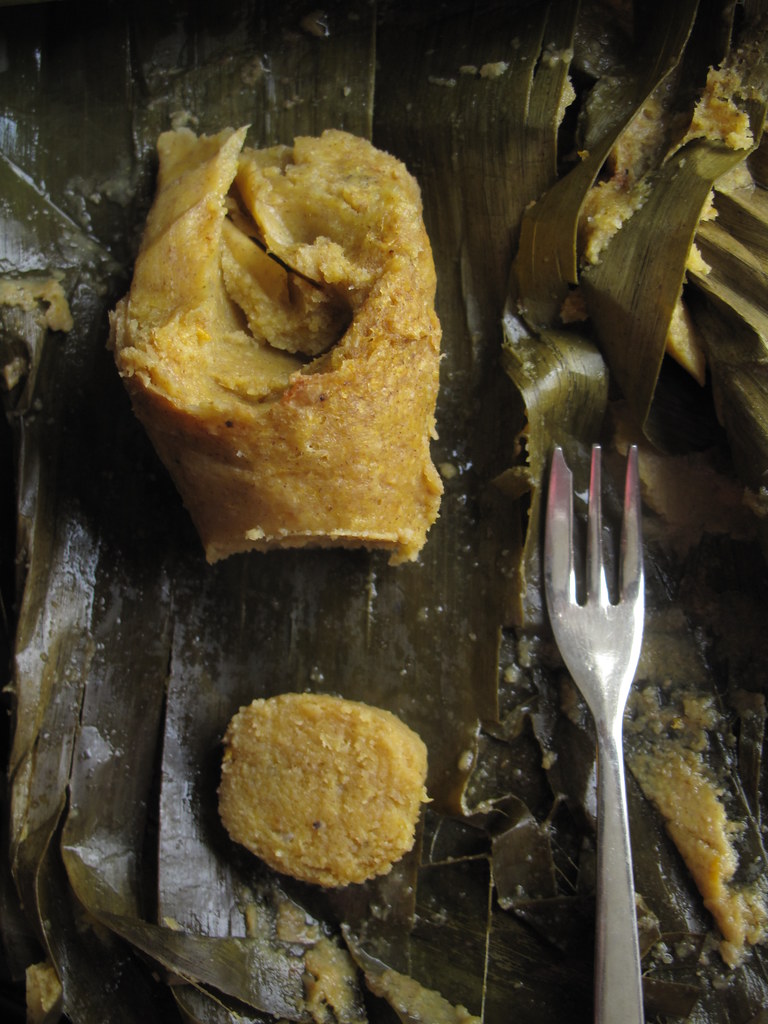

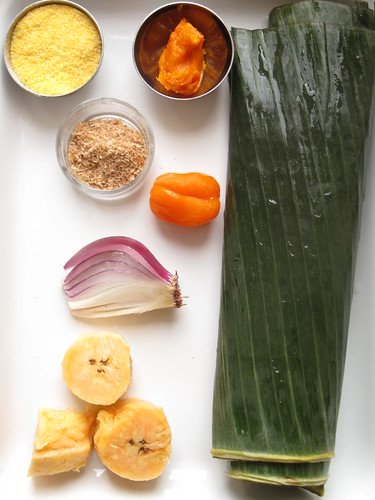
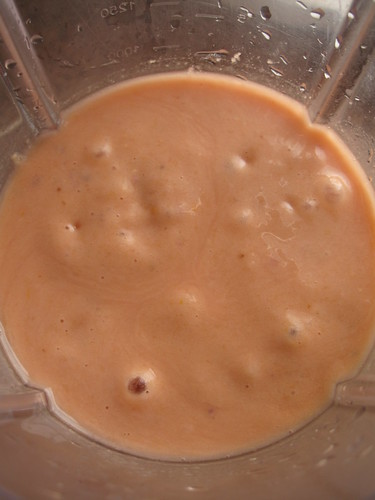
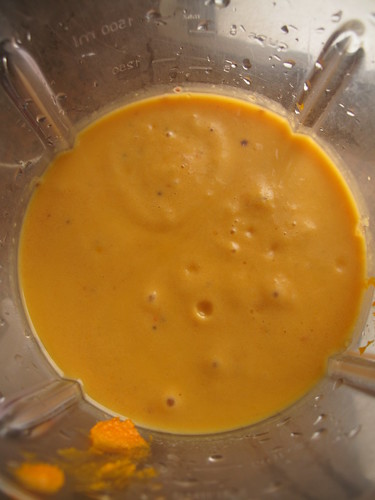
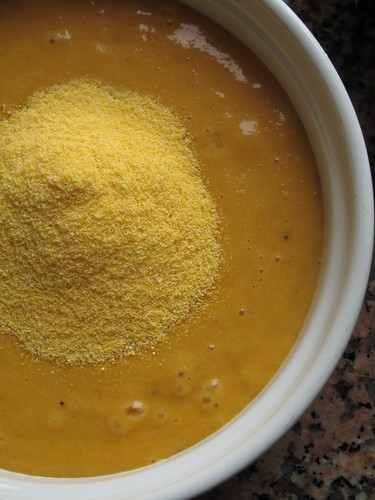

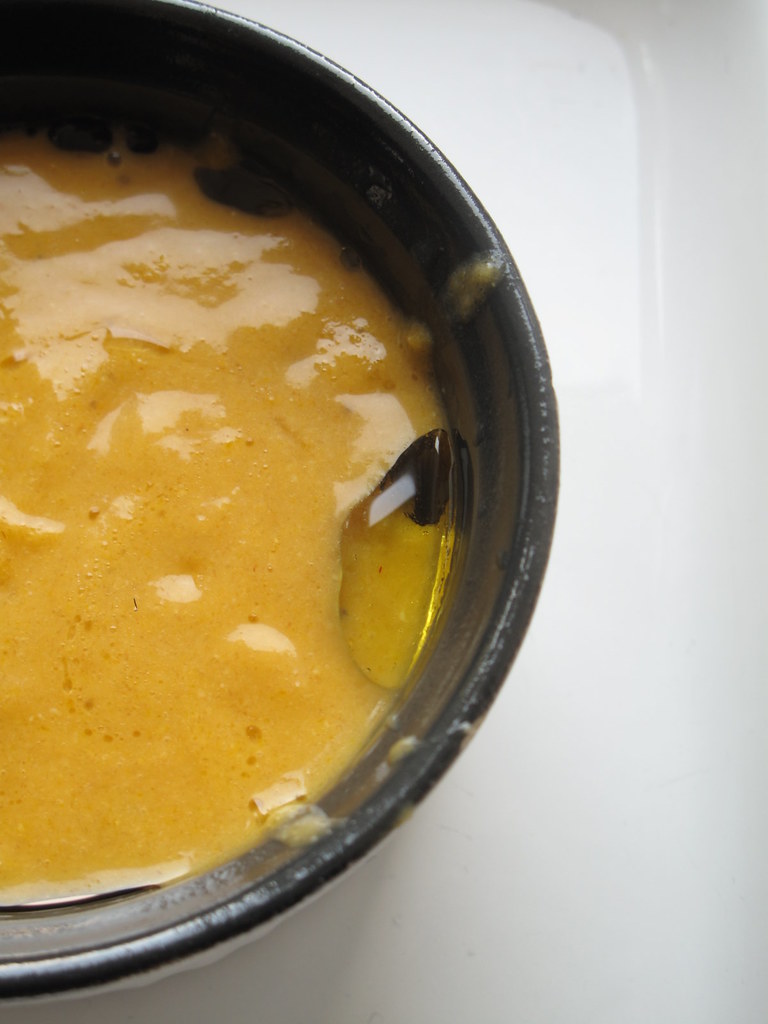
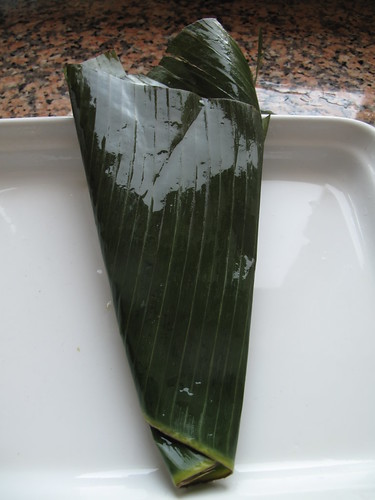
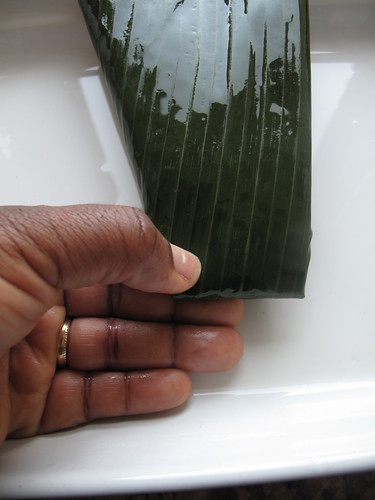
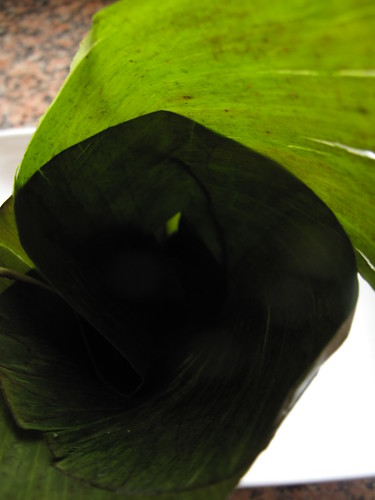

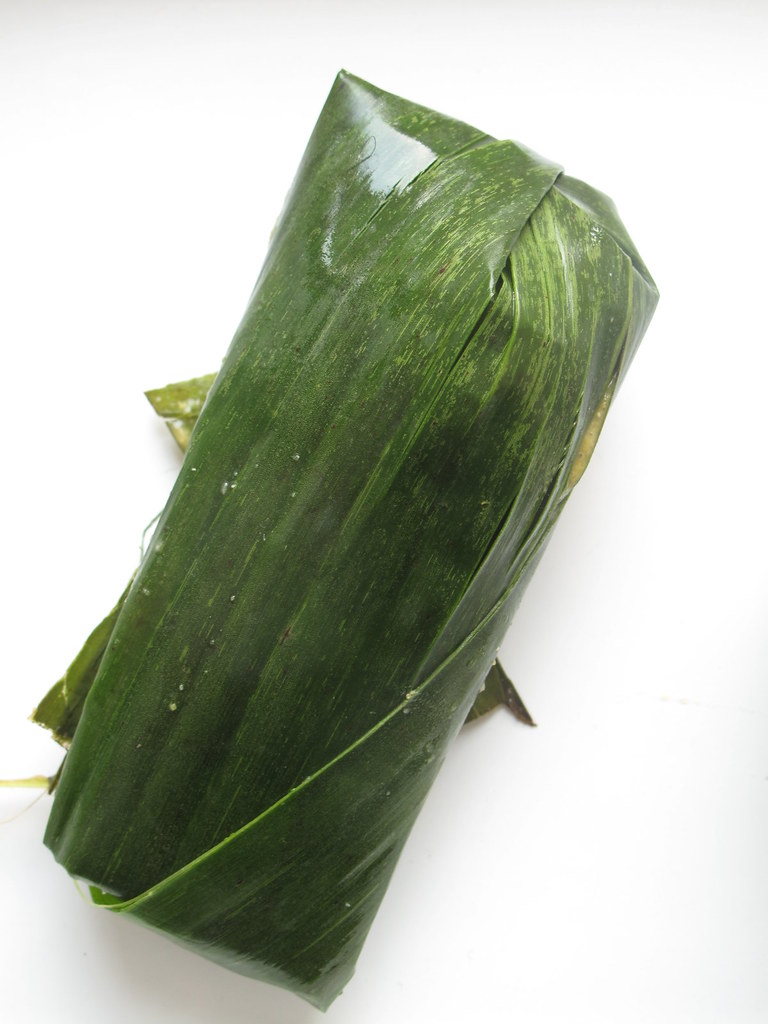
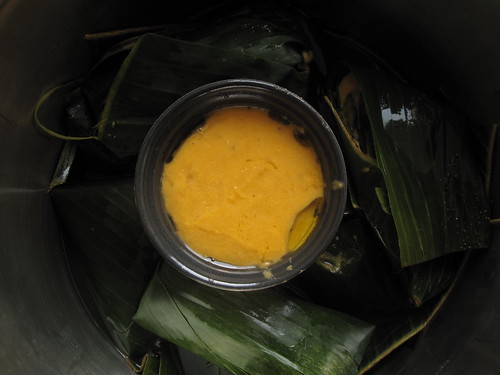
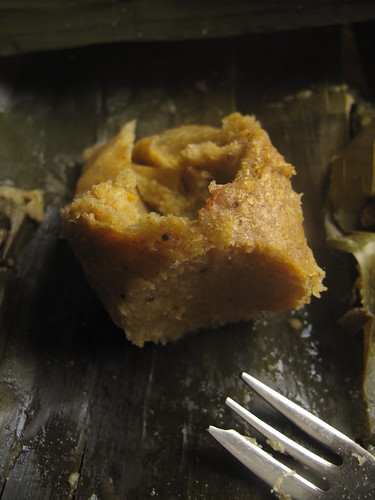

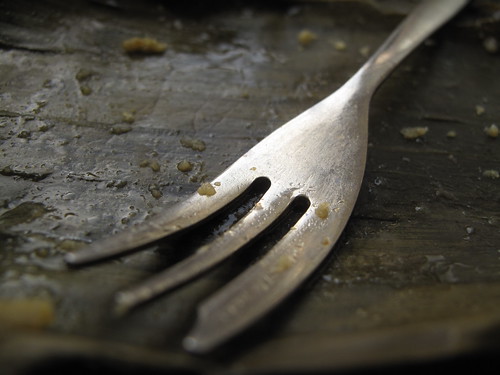


how nice…time to go try mine…
WOW ..this was really helpful..time to go make mine.
Last time I had this was probably about 20years ago and I have tried different combinations of ingredients in my quest to replicate the taste I remember from my childhood…and Finally I found it! (now dancing the ethighi ) Thank you so so much. I love your blog…was referred by a friend and I have been devouring your posts for the past week.
Preye
What is Polenta
Its similar to ground, dried corn
Hi there!
I am amazed by how much cuisines from South America resemble cuisines from Africa. I’m from Venezuela, living in the Netherlands. I have a friend from Cote d’Ivoire who has told me about the food from back home and it sounds a lot like what we eat in Venezuela. I’m not sure if it is the case with Nigeria as well but this recipe makes me think it might be!
In Venezuela we have a dish very much like this one for Christmas. It’s called “hallaca” and is made using precooked corn flour (much like polenta) and wrapped on plantain leaves! http://en.wikipedia.org/wiki/Hallaca.
I will try your recipe! I have a toko around the corner and they sell the plantain leaves 🙂
I like your blog, btw! Really nice!
looking very good, what else can be used apart form leaves and ramekins?
You could use doubled up sheets of aluminum foil, like people use for moin moin. I haven’t tried it though!
Please, we would appreciate an e-mail from you. Been trying to find a way to get across to you. and we would appreciate if it could be as soon as possible.
I am happy because it is difficult to find A good african food blog;
Just discovered your blog really liked it and i promised i will visit you very soon;
LOVE THE PRESENTATION SKILLS AND THE PICTURES. THIS IS AVERY CLASSY STYLISH BLOG. CONGRATULATIONS!
My only problem was the difficulty to post a comment!
I am happy because it is difficult to find A good african food blog;
Just discovered your blog really liked it and i promised i will visit you very soon;
LOVE THE PRESENTATION SKILLS AND THE PICTURES. THIS IS AVERY CLASSY STYLISH BLOG. CONGRATULATIONS!
Hmmm! sounds mouth watering, but how can i prepare my own polenta, and can i prepare it like we prepare moin-moin (beans pudding) in nigeria.
I’m just a bachelor trying to fing his way in the kitchen
Just brilliant! I always had my grandma make this for me all the time. I was searching all over the internet for the recipe. Thanks!
[…] it, I know it, I trust it. Till then, here is a delicious steamed bean pudding, in the manner of ukwaka, steamed plantain pudding yet made with the same base ingredients as akara, bean fritters. […]
[…] it, I know it, I trust it. Till then, here is a delicious steamed bean pudding, in the manner of ukwaka, steamed plantain pudding yet made with the same base ingredients as akara, bean fritters. […]
I love what you do with your photographs, this plantain steamed pudding sounds just amazing. What a treat!
Thanks Anna, Taste HongKong
Valerie dear, mashed plantains are yucky! I like them boiled, fried or roasted. Or in a pottage or like this but mashed…no!
Conor, G, Alta thank you
Oh wow, yum. I love tamales (of course, I’m accustomed to the Mexican or South American varieties) and this sounds so lovely! Also love plantains.
i love plantains, and this method looks just fabulous!
I love learning more about Nigerian food, and really I think it would not be possible for you to make something that doesn’t look lovely, judging by your track record! Please keep teaching us 🙂
I know I love the flavour of banana leaf – but have never had plantains… well, I bought one once and cooked it and mashed it and it was yucky. So, I know I have to try them again. This is definitely an exotic recipe for my palate – but looks very appealing. I love the texture. A great great read.
🙂
Valerie
I know so little about African cuisine that I have almost mistaken this as a S.E.Asian food. Thanks for sharing.
I love what you’ve created here. The photography is excellent and the background history is superb. Its so interesting to understand why, for instance why Nigerian food uses peppers or chilli so much in fish.
looks delicious love Nigerian food had some friends from Nigeria when I was a student
Norma, yum. What a great idea – I may have to seek out that recipe to try
Mimi – :-),let me know if you give it a go
Kerstin – I thought of you as the one person I was sure would try it!
Thanks Rebecca
What a fantastic idea – I love it! As you know I’m somewhat obsessed with plantains so this is right up my alley 🙂
I’m fascinated by world foods. I would so love to try this, sweet and savory together when done right can be such a great combination.
I’m still laughing over “firm boundaries to constrain me”
Mimi
We have something similar called “pasteles” stuffed with pork meat. Love it!
I have never worked with plantains before. It is quite dense and rich isn’t it? I would try it if I found some here.
mademoiselle délicieuse, so many similarities. Thank you for for showing me a link.
Rhonsam :-), would be lovely in the cabin!
Monet, thank you – more on Nigerian cooking coming soon, promise.
Penny, it can be quite light, depending on how you cook it. I hope you can find some – I think you’d like it
You made this look beautiful in all of its simplicity. I loved reading this blog post, hearing your thoughts about this cuisine, photography, your own background. I know very little about Nigerian cooking, so I’m excited to read more!
Somehow you still managed to make it beautiful. I really enjoy plantains, if I ever get banana leaves up here in cowboy country, I’d love to try this recipe. I personally am a fan of sweet and savory together.
A similar Chinese version involves glutinous rice being wrapped in bamboo leaves (with both rice and bamboo leaves being abundant in China) and simmered as you described above. There are many similarities between the food of different cultures =)
I would love to try it. It seems my plantains always end up too ripe so I just saute them and add some molasses and ginger liquor…as a dessert. I am not big on sweets in my savory either. So the little bit in this might be just right. I’ll have to wait for the video, I have a lot of banana trees I can use the leave from just waiting.
This almost looks like a plantain tamale! Yummy!!! Thank Oz, I am so happy to learn more about Nigerian cooking…pretty or not! (I did already make your suya!) YUM!
Its only since moving to Europe that I’ve considered plantains as dessert. I love the idea of ginger in it – some spice to the sweet. And THANK you for trying out the suya. I smile
Wow That looks terrific! Your food photography is excellent. I don’t even feel like a need to make it at this point because I have just cooked and eaten it on my computer screen. I will be bookmarking this for future reference thanks so much for sharing. I’m so inspired and hungry!
-shevon
Thank YOU Shevon!